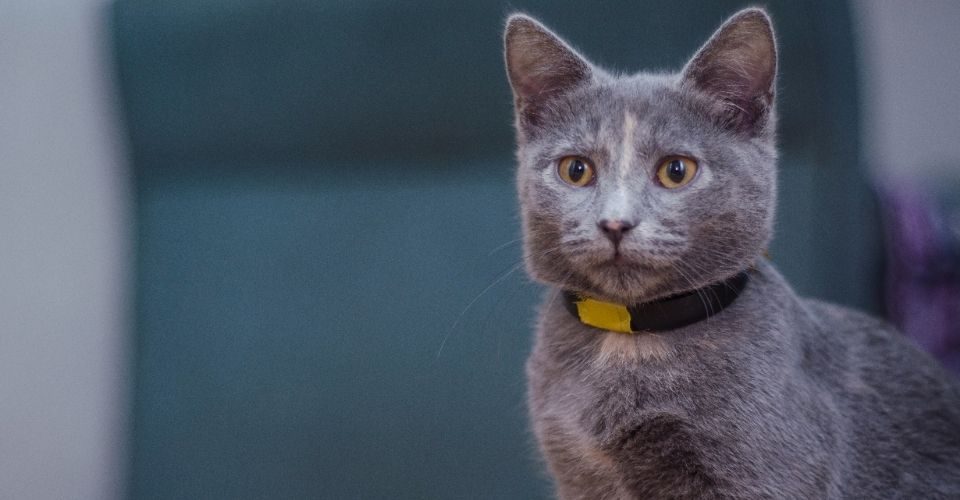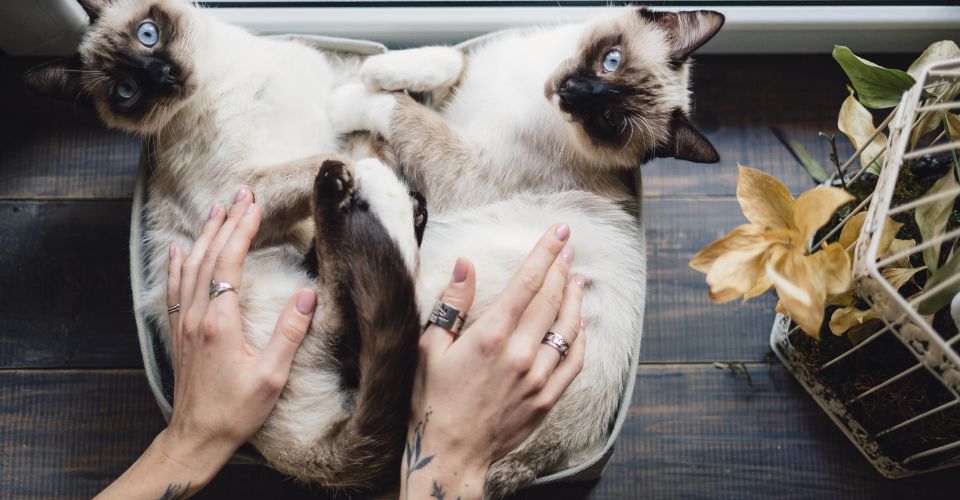The feline with a distinctive “smiling” face, plush fur, and a bright blue coat rendered in an elegant sheen, the Russian Blue is any feline lover’s dream. They are elegant, sweet, and friendly, and there is no reason why would anyone not want one. Except, as fate would have it, you suffer from pet allergies. In that case, you may ask, are Russian Blue cats hypoallergenic?
The term is particularly popular among pet owners, and many like to pick their cats or dogs based on their hypoallergenic profile. It is used to refer to a cat or dog breed with supposedly none existent effect on people with allergic sensitivities. As nice as it might sound, it does feel too good to be true. Well, it kind of is.
Are Russian Blue Cats Hypoallergenic?
Yes—and no! Technically, they may be considered hypoallergenic, but sorry to break it to you that no breed of cats or dogs is 100% hypoallergenic, Russian Blue cats included. However, some cat breeds tend to shed fewer allergens than others; as a result, people suffering from pet allergies are likely to tolerate them better than other breeds. The scientific studies to differentiate between such breeds are limited.
A study exploring salivary Fel d 1, the major cat allergen capable of inducing reactions in 90 – 96% of patients with allergy, finds that several species of domestic shorthair cats indeed release lesser Fel d 1 allergen in their saliva. Since the Russian Blue is short hair, it gives us hope. Also, according to Hill’s Pet, Russian Blue cats are indeed less allergenic, adding more credibility to the idea.

But a less allergenic cat breed is still likely to cause an allergic reaction. It is therefore important to understand how it causes allergy and ways to prevent that. A total of eight cat allergens are recognized, Fel d 1 – Fel d 8, where the former is the major cat allergen. Sources of Fel d 1 include saliva, sebaceous glands, lacrimal & anal gland secretions, and urine.
These allergens are exposed to the environment while the feline grooms itself, licking its hair slick. Cat hair is the main reservoir of the allergen, which is distributed to the environment with dander. The smaller particles become airborne and remain suspended in the environment for days.
Since they are airborne, they can quickly find their way into the respiratory passages and can easily stick to the clothing of people inhabiting the same area as the cat, thus spreading allergens outside the home. Minor allergens are another important factor, capable of inducing 10 – 40% of the total allergic reactions. People sensitive to minor allergens are more likely to feel the difference between breeds in terms of inducing allergies.
Can you minimize pet allergies? Yes. But more on this in a while. First, a brief breed overview of the Russian Blue cat.
Russian Blue Cat Breed Overview
Russian Blue Cat Breed Overview
Weight Male: 10 – 12 lbs.
Weight Female: 7 – 10 lbs.
Coat Color: Silvery Blue
Eye Color: Bright Green
Life Expectancy: 15 – 20 Yrs.
Origin: Russia
Physique
The Russian Blue is a captivating beauty with its short, lustrous coat, vivid green eyes, an elegant, lithe body, and peculiar facial features that make it look like it’s smiling. It has a medium wedge-shaped head, a straight nose, and large ears with a wider base. The paws are small and round, and the tail long and proportionate to the body. Even though it is a fine-boned muscular cat, it looks heavier than it is, thanks to the plush fur coat.
Temperament
Gentle and loving, the Russian Blue is likely to focus her affections on a particular family member. Acting shy in the new surroundings, she dictates the terms of engagement once she gets comfortable. She greets its humans on arrival and shadows them around the house but appreciates her quiet time as well. When faced with someone unfamiliar, she likes to hide in a corner and observe from there.
Needs
An intelligent breed, she needs mental stimulation to keep her in a healthy state of mind. A game of fetch or a session with fishing pole toys is what she will appreciate. Russian Blue cats are low maintenance, and following regular baths, toothbrushes, and combing would do their job.

These cats enjoy their mealtime and therefore tend to gain weight. It is therefore important to stick to scheduled feeding, strictly following the food quantities required for her age and size.
Interventions to Minimize Allergic Reactions
Even if Russian Blue cats have a lesser tendency to cause allergic reactions, the risk stays anyways. With an increasing number of people opting to keep pets and their emotional attachment to their tiny family members, likely, people would rather suffer and go ahead with keeping a pet despite the challenges. It is therefore important to put in place several interventions to keep the harm as low as possible.
1. Create Pet-Free Zones
Hands down, the best possible intervention would be to remove the cat from the environment. Since a complete lock-out is not possible, consider keeping her in a designated area. Make sure that she does not get access to your bedroom. Such measures, however, run the risk of inducing anxiety or depression in the cat. Therefore, consult your vet before lying down the safety measure.
2. Establish Cleaning Regimen
Use an aggressive cleaning regime to keep out the allergens. Begin by removing carpeting and upholstered furniture from the living area; build on it by routinely cleaning, vacuuming, and wiping the surfaces, washing cushion covers, bed linen, and removable pet bedding covers. Wash your hands and change your clothing after spending some time with your cat.
|
|
3. Bathe the Cat: Shower
A lot of allergens spread with the cat dander. Bathing her weekly may help reduce the surface concentration for a short time. Follow it up with proper grooming to remove loose materials and possible antigens. A major drawback with this preventive measure is that it ends up causing stress to both the owner and the cat. Again, implement any intervention after thorough discussions with a veterinary expert.
4. Introduce Autoimmunity in Cats
This is a novel approach to dealing with cat allergies and remains under study. Although not commercially available yet, the under-progress method involves administering immunization to cats, so they can develop autoimmune antibodies. The purpose is to neutralize the allergen effect before it makes it to outside the feline body. But this too may have ethical implications, as it entails treating an animal with a medicine that has no beneficial effect on the cat.
5. Dietary Interventions: Anti-Fel d 1
Another one of the novel approaches, the method involves introducing dietary supplements to the cat to tackle the allergens. In this method, the felines receive anti-Fel d 1 immunoglobins so that the antibodies produced can neutralize the Fel 1 d in the saliva. Given below are some of the food products formulated for shedding control and allergy relief.
6. Medication
This one is a no-brainer. You have allergies, and out of sheer love for your pet, you refuse to part with it. Regardless of the number of preventive/preemptive measures you put in place, you still need to have all your necessary anti-allergy and symptom-relieving medicine nearby.
7. Immunotherapy
As a final step, consult your doctor for seeking immunotherapy if your allergic reactions are too severe and cannot be properly managed with regular medication. This method is suggested to treat the cases with pharmacotherapy (regular medication) but fails to help alleviate the situation. However, more large-scale trials are required to establish efficacy.
Final Word
People forge close ties with their pets and consider them as much a part of their family as themselves. The sad thing is that roughly 10 – 20% of the world population suffers from cat allergies. Consequently, it has a massive effect on the kind of pets people can have. Russian blue cats’ hypoallergenic profile is suitable enough for people with pet sensitivities to keep, given they are following strict control measures. This means that although not entirely hypoallergenic, the cat breed does release relatively lesser allergens.
People interested in keeping cats or dogs, despite their propensity to develop allergic reactions, need to employ a multi-pronged strategy to cope with the situation. It is wise to consult the veterinary expert and your physician before even bringing the Russian Blue cat home. Come up with a preventive regime that includes aggressive cleaning, bathing (for both the owner and the pet), cleaning regimes, and some pharmacological, dietary, and immunotherapy-related interventions to bring t under control.









